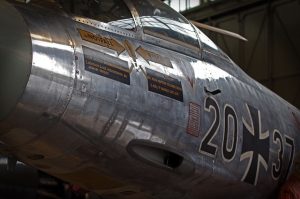 Airplanes rely on lift to stay in the air. Lift is the force produced as air flows under an airplane, thus “lifting” the airplane up. To produce lift, some airplanes have a flying wing design, whereas others use a lifting body design. Flying wing airplanes and lifting body airplanes both produce lift, but they each feature a unique design that’s reflected upon their appearance. What’s the difference between flying wing airplanes and lifting body airplanes?
Airplanes rely on lift to stay in the air. Lift is the force produced as air flows under an airplane, thus “lifting” the airplane up. To produce lift, some airplanes have a flying wing design, whereas others use a lifting body design. Flying wing airplanes and lifting body airplanes both produce lift, but they each feature a unique design that’s reflected upon their appearance. What’s the difference between flying wing airplanes and lifting body airplanes?
What Is a Flying Wing Airplane?
A flying wing airplane is a type of aerodynamic airplane without a distinct fuselage. They still have a cockpit, and they usually have a compartment for crew and payloads. These compartments, however, are essentially part of the wings. Flying wing airplanes are essentially large and narrow airplanes with blended wings. In the middle of their wings are compartments for the pilots, crew and payloads.
Most flying wing airplanes consist of military jets. They’ve been around since the mid-1900s. Over the years, flying wing airplanes have evolved to become an integral part of the U.S. Air Force. The U.S. Air Force has an array of flying wing airplanes, including stealth jets, that it continues to use.
What Is a Lifting Body Airplane?
A lifting body airplane, on the other hand, is a type of aerodynamic airplane consisting of a fuselage without conventional wings. Lifting body airplanes don’t produce as much as lift as their flying wing counterparts. Therefore, they rely more heavily on propulsion, which is produced by their jet engine or engines.
Differences Between Flying Wing and Lifting Body Airplanes
In terms of appearance, flying wing airplanes are lifting body airplanes are starkly different. Flying wing airplanes have large wings with no distinct fuselage, whereas lifting body airplanes have a large fuselage with no distinct wings.
The way in which flying wing and lifting body airplanes produce lift also varies. Flying wing airplanes produce lift using their wings. As air flows under their wings, lift is produced. Lifting body airplanes, conversely, produce lift using their fuselage. Their fuselage essentially acts as a wing. Air will flow under a lifting body airplane’s fuselage — just like it would with the wings of a flying wing airplane — to produce lift.
Another difference between lifting body airplanes and flying wing airplanes lies in their speed. Lifting body airplanes are typically faster than flying wing airplanes. Most flying wing airplanes are designed to operate at subsonic speeds, whereas lifting body airplanes are designed to operate as supersonic and hypersonic speeds.



